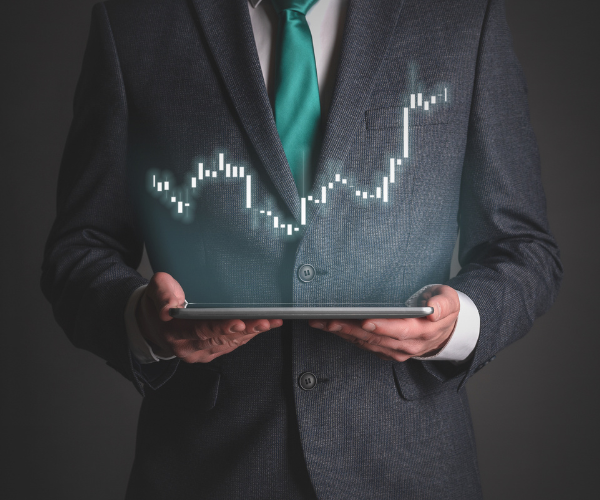There’s a popular perception that “dividend stocks”—i.e., stocks with a reputation for paying out consistent dividends—can deliver decent returns, while also creating a dependable income stream for spending in retirement or elsewhere.
But is stocking up on dividend stocks really such a good idea? Building a concentrated position in dividend stocks may appeal at a glance, but a closer look reveals several cracks in the foundation. Today, we’ll describe how dividend stocks actually deliver their returns. Next, we’ll address why we prefer the total return approach of a more globally diversified investment portfolio, even when you’re spending down your investments in retirement.
More Dividends = Less Capital
Perhaps the greatest misperception about stock dividends is that they represent “free” or “extra” money, above and beyond the capital value of the shares you hold. This free-dividend fallacy leads investors to think of stocks as their cake, and dividends as an extra layer of frosting.
That’s not how it works. As University of Chicago’s Samuel Hartzmark explains:
“[I]f you have a stock that is worth $10 and it pays a dollar worth of dividend, the price goes to $9, and you’ve got a dollar worth of dividend. So, unlike the bond where, if it paid a certain coupon payment, you end up with more money, when you receive a dividend, you have the exact same amount of money, just labeled slightly differently.”
In other words, dividends are a bite out of your cake. You might not notice a specific dividend-driven price drop, since market pricing mechanisms are always instantaneously adjusting share prices based on myriad factors. But it’s there. Post-dividend, your stock—your slice of a company—is worth a tiny bit less.
This makes sense. After a company distributes, say, a $1/share dividend, it has $1/share less capital in its coffers. Either a piece of its profits has been paid out to you, or the company has dipped into its reserves or taken on debt if it’s stretching to pay out a dividend during unprofitable times. Either way …
Since your stock represents an ownership stake in the company’s worth, a dividend payout devalues the worth of your shares in equal measure.
In short, receiving a company’s $1 dividend has the same effect as selling $1 worth of its stock. One hopes a thriving company will soon make fresh profits to replenish your share value and fund future dividends. But as with any other stocks you may hold, there’s no guarantee.
Dividend Streams Can Dry Up
There’s another reason dividend stocks tend to appeal to investors. Especially in retirement, you may prefer to differentiate your available spending cash from your continued investment dollars. In behavioral finance, this is called mental accounting. Even though money is money, we like to mentally compartmentalize it, assigning different roles to different “pots.”
Creating an income stream out of a stock dividend pot scratches this mental accounting itch. But there are hitches to this itch. Even if a company has been distributing dependable dividends for years, that does not mean it always will. If a company falls on hard times, its investors may not only lose the dividend they’ve been counting on, the company’s attempts to prop up unsustainable dividend payments may weaken its broader ability to recover.
In fact, sometimes, the bigger they are, the harder they fall. Prior to 2018, General Electric had long been a faithful favorite among dividend stock investors. So much so, that the company continued struggling to pay out decent dividends, even when it could ill afford to. Its efforts grew increasingly unsustainable, until GE finally surrendered in fall 2018, slashing its quarterly dividends from 12 cents to 1 cent per share, where it remained for several years.
As James Mackintosh of The Wall Street Journal observed at the time: “[D]ividends should be the result of a successful business throwing off cash, not something that executives strive to maintain even when the cash could better be used elsewhere.”
Worse, the strategy may disappoint you at the worst time. The Wall Street Journal columnist Jason Zweig described what happened to many dividend stocks during the Great Recession:
“In 2007, 29% of the S&P 500’s dividend income came from banks and other financial stocks … [and] That didn’t end well. Many banks that had been paying steady income to shareholders suspended their dividends – or even went bust. Their investors suffered.”
Which brings us to our next point about turning to dividend stocks as a separate income source.
“Safe” Stocks?
Dividend stocks may offer a more obvious way to generate cash flow compared to their non-dividend counterparts. But at the end of the day, they are still stocks, subject to the same risk factors and expected equity premium common to all stocks. As this Monevator post describes, “The key to (most) bonds is they aim to pay you a fixed income until a certain date, at which point you get your initial money back. That is very different to equities [stocks], which offer no such certainty of income or capital returns.”
In short, the evidence is clear, and has been for decades: Dividend stocks are stocks. And in the near-term, stocks are a more volatile investment than bonds. This helps explain their higher expected long-term returns.
Key Points So Far
Let’s recap:
- Dividends are not “free.” They are more like a return of your capital than an extra return.
- Dividend stocks may not provide the dependable income stream you’re hoping for across markets that are forever volatile in the short-term. A company being pressured to pay out dividends may also engage in practices that run counter to its sustainable worth.
- Dividend stocks are still stocks, with risk characteristics that best position them for generating long-term expected returns, rather than for milking as near-term cash cows.
In our next piece, we’ll look at why we prefer a total return approach to investing and withdrawing income from your portfolio, rather than concentrating into dividend stocks. Until then, ask yourself: “Am I receiving any guidance from my current Financial Advisor that is truly helping me navigate uncertainty?” If not, take a look at our service model here and schedule a time to learn more about how we can help navigate your financial future: https://www.plansimplefp.com/about-us

